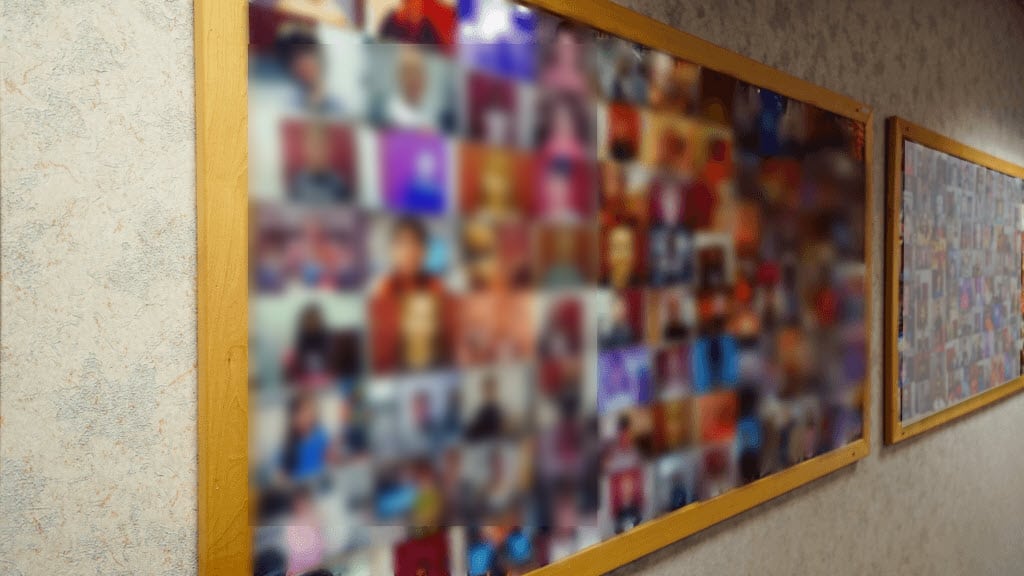Orthokeratology Lenses (Ortho-k Lenses)
Improve Your Vision While You Sleep
If you or a member of your family suffers from myopia, ortho-k is a great option to see better without the need for invasive surgery.
Ortho-k Lenses work as a vision shaping treatment by gently molding the curvature of your cornea while you sleep, allowing you to see clearly without contact lenses or glasses during the day. This corneal reshaping is called corneal refractive therapy – or CRT for short.
The lens itself differs slightly from a regular contact lens. This specially designed orthokeratology lens is gas permeable . Unlike daytime contact lenses, you’ll put your ortho-k contact lenses in your eyes a few minutes before bedtime, and remove them when you wake up around 8 hours later.
At our office in Fair Lawn, we offer Paragon CRT Contact Lens treatment to provide our patients with effective treatment of myopia.
Our Ortho-K patients get amazing results. A full 87% of Paragon CRT Contact Lens wearers shared that their experience with the lenses met or exceeded their expectations (Paragon randomized study).
Ortho-k will correct nearsightedness (myopia), farsightedness (hyperopia), and astigmatism in the overwhelming majority of cases. The desired goal for an ortho-k wearer is to achieve vision that is 20/40 or better.
CRT Explanation Video from Paragon Vision Sciences
How Long Does Ortho-K Take to Work?
Ortho-k begins to work almost immediately. You should start to see positive effects from wearing orthokeratology lenses within the first few days. However, it can take up to four weeks for your vision to stabilize and for your improved vision to last throughout the entire day.
Many people will have some awareness of the lenses on their eyes prior to falling asleep during the first few weeks of treatment, however, over time the eyes will adjust to the feeling of the ortho-k lenses and become more comfortable. Vision correction is expected to last between 24-36 hours without the need for eyeglasses or contact lenses and can be enjoyed for many years with proper use and eye care.
Who is a Good Candidate for Orthokeratology?
People of all ages use ortho k contact lenses to improve their vision. The onset of myopia can occur at any age, but it most commonly occurs in school-aged children between the ages of about 5 and 15. Ortho-k helps make myopia management relatively easy by ditching the need for contacts or glasses during the day.
Identifying and treating myopia early with ortho-K lenses will not only improve your child’s vision, but preliminary studies also show that it may help to slow the progression of myopia.
While refractive surgery and LASIK surgery are not recommended for children and young adults to correct vision problems because vision must be stable, ortho-K, on the other hand, can provide a reshaping of the cornea to temporarily improve vision.
Others who would benefit from this form of vision correction are those who participate in contact sports or work in an environment that would make it increasingly difficult to wear contact lenses, such as in a dusty or dry environment.
Advantages of Ortho-K Versus Other Alternatives
No need for Surgery – Your vision is improved while you sleep at night. You don’t have to worry about the discomfort, recovery time, and other potential risks of surgery.
Crystal Clear Daytime Vision – no need for corrective lenses during the day. You won’t need to wear contacts or glasses.
Sports – You no longer have to worry about a contact lens popping out. You also don’t have to worry about breaking your glasses – or your eyewear impacting your eye and causing an injury. Water sports also become much more accessible as you don’t need to worry about finding the right glasses or contacts to use for aquatic activities.
Avoid Soft Contact Irritation – Oftentimes, the soft contacts that people wear during the day can cause dryness and irritation. You’ll no longer have to worry about dealing with the side effects of having to wear soft contacts during the day.
May Slow Myopia Progression – A study cited by the National Institutes of Health mentions that the progression of myopia was slowed significantly in a test subject undergoing orthokeratology patient (a young boy). Preliminary studies seem to show that single lens glasses may actually the effects worsen myopia over time. Slowing progression can prevent or delay some of the negative complications that may arise from having myopia over time.
Academic Performance – Students that struggle with nearsightedness may also struggle academically. Ortho-k can help the child focus on what is important – and not worry about dealing with glasses or contacts to be able to see and perform to their potential.
The Orthokeratology Process at Our Office in Fair Lawn
You’ll first have to set up an appointment for an eye exam at our Fair Lawn Office. At this time you’ll receive a comprehensive eye exam to ensure that you will be a good candidate for ortho-k.
The process of fitting ortho-K lenses begins with our eye doctor measuring and mapping the surface and shape of the cornea which is done with an instrument called a corneal topographer. This procedure, which is quick and painless, enables our optometrist to design custom-made ortho-k lenses that specifically fit your eye.
Once the lenses are properly fitted and worn overnight, they begin flattening the cornea while altering how light is entered into the eye, subsequently correcting your vision. The lenses are sturdy and gas permeable ensuring the health of the eye by allowing oxygen to penetrate.
Ortho-k lenses must be worn regularly at night or the shape of the cornea will return to its original form. Once the lenses are removed in the morning, the vision correction will typically last for approximately 1-2 days without the need for glasses or contact lenses. Exciting, right?
Ortho-K Testimonials
Sierra Blair-Coyle is a professional rock climber world champion who wears Paragon CRT lenses to provide her with the clear vision she needs to compete at the highest level.
Champion Rock Climber Sierra Blair-Coyle Shares Her Story of Enhanced Sports Vision with CRT Lens Technology
Frequently Asked Questions
Are Ortho-k Lenses Safe?
Orthokeratology contact lenses are absolutely safe. Ortho-k was first approved for nighttime wear by the FDA in 2002. The CRT lens that we offer – Paragon CRT – has been prescribed 1.5 million times in over 50 countries.
Ortho-k lenses are as safe as contact lenses. The main risks associated with orthokeratology are irritation and infection. With proper hygiene techniques, the risk of eye infections is greatly reduced.
Some people do develop temporary vision problems during the first month which may include ghosting, double vision, or starbursts around lights. However, these symptoms usually subside after a month of consistent lens wear and as the precision of the fit is improved.
With all vision treatments, it is crucial for you to have yearly comprehensive eye examinations with our optometrist at our Fair Lawn Office.
How Long Do I Need to Wear Ortho-K Lenses at Night?
For best results, 8 hours is the right amount of time to have your orthokeratology lenses in. By keeping the lenses in during a normal night’s sleep, you should receive the full benefits of your lenses.
How Long Do the Benefits of Ortho-K Last?
The benefits of ortho-K last for many years – as long as your eyes remain healthy and you’re wearing the lenses properly. Orthokeratology temporarily reshapes the cornea to provide you with better vision.
If you stop using your ortho-k lenses, your cornea will no longer remain flattened and your eyes will slowly return to their original shape. This will result in the reoccurrence of your vision problems.
What Vision Problems Does Ortho-K help with?
Orthokeratology is typically used as a temporary corrective treatment for myopia, or nearsightedness. Patients experiencing other refractive errors, such as a milder form of astigmatism, hyperopia, and presbyopia can also benefit from the use of ortho-K lenses.
How much do Ortho-K Lenses Cost?
The cost of ortho K lenses will vary from person to person depending on the severity of the refractive error. Insurance coverage may pay for ortho-K lenses in some instances.
We have vision insurance experts on staff. Call our office with your insurance information and we’ll let you know what your insurance company is likely to cover and if there may be any out-of-pocket costs.
About Myopia and Its Effect on the Eye
Ortho-K treats many conditions – including myopia.
Myopia is one of the most common eye disorders. It is also known as nearsightedness that occurs when the light that comes into your eye is focused in front of the retina instead of on it. This is due to someone having a longer eye length than is required for optimal vision.
This makes it more challenging for people with myopia to see things that are far away. The root causes of myopia can be traced to both genetic and environmental factors. Myopia often begins in childhood and can worsen over time if not treated.
Cases of Myopia actually appear to be on the rise worldwide. According to a WHO study, Myopia is anticipated to affect 50% of the world’s population by 2050 compared to just 22% in 2010. In the United States, the prevalence of myopia has risen from 25% to 41.6% from 1971 to 2004 according to an NIH study.
The Risks of Not Treating Myopia
Unfortunately, there are many risks associated with the progression of Myopia. Future health concerns include the following:
Myopic Macular Degeneration – a condition where the center of your retina (the macula) begins to stretch and deteriorate as a result of being nearsighted. The result can be tears in the macula and retinal bleeding.
Cataracts – cataracts are a clouding of the lens in your eye. The result is that things may look very blurry.
Lacquer Cracks – the continual elongation of the eye over time that comes with myopia can cause breaks between the retina and the choroid.
Chorioretinal Degeneration – with lacquer cracks and atrophy from myopia, new blood vessels can form which can lead to potential vision loss.
Glaucoma – Glaucoma is a condition where the optic nerve in your eye is damaged, which can lead to vision loss.
Retinal Detachment – retinal detachment caused by myopia is a condition where the retina (the back of your eye) peels away from the rest of your eye.
History of Orthokeratology
Orthokeratology is well-researched and well-tested with a long history that works extremely well for myopia control.
Reshaping of glass lenses was discovered by doctors in the 1940’s . They noticed that they had relief from astigmatism when their patients removed their glasses. This discovery led to experimentation with the reshaping of lenses for this purpose and the creation of contact lenses for the reduction of the effects of myopia or nearsightedness. It is believed that orthokeratology was developed as a remedy to help those who had trouble wearing traditional rigid contact lenses. George Jessen is credited with creating the first known orthokeratology design, known as “Orthofocus”, in the 1960’s though it was not considered to produce predictable results at the time.
It wasn’t until the 1990’s that orthokeratology technology advanced to become the procedure it is today. The first orthokeratology system (Ortho-K) was developed in Germany in 1993 and was a custom-made disposable rigid frame prescribed by an ophthalmologist. While wearing the Ortho-K system, patients would wear the frames for a few hours at night for up to 6 weeks, after which they would switch from their glasses back to their contacts. Due to the large number of disposable frames being made and distributed, it was not long after the introduction of this product that other countries began developing systems as well. However, a difference in international regulatory controls caused a slight delay in FDA approval to enable this technology to initially be available to consumers in the United States.












